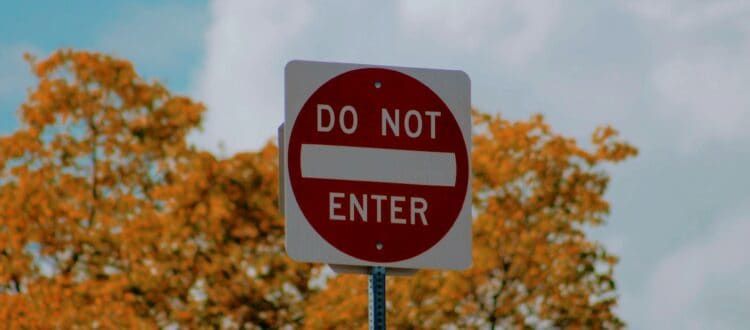Regulatory street signs play a crucial role in maintaining order and safety on the roads. These signs are designed to inform drivers and pedestrians about specific traffic laws, regulations, and requirements that must be adhered to within a given area.
From speed limits and stop signs to parking restrictions and one-way streets, they provide essential guidance to ensure the smooth flow of traffic and the protection of all road users. Understanding the meaning and significance of these signs is fundamental for promoting responsible and law-abiding behavior on the roads, ultimately contributing to the overall safety and efficiency of our transportation infrastructure.
What Does Regulatory Mean for Street Signs?
Regulatory street signs serve as a set of rules and regulations that govern the flow of traffic and the behavior of road users. These signs convey mandatory instructions that must be followed by all drivers and pedestrians within a specified area. Whether indicating speed limits, parking restrictions, or the right of way, regulatory street signs are authoritative in nature, dictating the actions and responsibilities of those navigating the roads. Essentially, they are the legal framework that shapes the conduct of individuals on the streets, ensuring uniformity and safety in the midst of diverse and dynamic traffic environments.
Who Sets the Standards on Regulatory Street Signs?
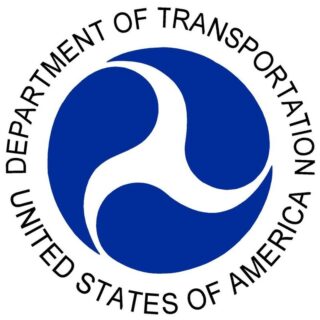 The standards for regulatory street signs are set by the appropriate national governmental authorities responsible for transportation and traffic management. In the United States, these standards are established by the Federal Highway Administration (FHWA) and are detailed in the Manual on Uniform Traffic Control Devices (MUTCD). This comprehensive manual provides guidelines for the design, placement, and usage of regulatory street signs, ensuring consistency and clarity across the nation’s roadways.
The standards for regulatory street signs are set by the appropriate national governmental authorities responsible for transportation and traffic management. In the United States, these standards are established by the Federal Highway Administration (FHWA) and are detailed in the Manual on Uniform Traffic Control Devices (MUTCD). This comprehensive manual provides guidelines for the design, placement, and usage of regulatory street signs, ensuring consistency and clarity across the nation’s roadways.
The standards are developed based on extensive research, best practices, and input from transportation professionals, with the primary goal of enhancing safety, efficiency, and uniformity in traffic control. Adherence to these standards is crucial for promoting effective communication and understanding among road users, ultimately contributing to the overall functionality and safety of the transportation network.
What Does MUTCD Say About Regulatory Street Signs?
Application
The Manual on Uniform Traffic Control Devices (MUTCD) stipulates that regulatory street signs are to be utilized for informing road users about specific traffic laws or regulations that are in effect and to communicate the legal requirements that apply. These signs are essential for conveying mandatory instructions that drivers and pedestrians must follow, such as stopping at stop signs, adhering to speed limits, and understanding right-of-way rules. The MUTCD emphasizes that regulatory signs should be applied in a way that minimizes the need for vehicles to stop unnecessarily, and they should not be used as a means for controlling speed. Also, the installation of a STOP sign on a major street should be justified by a traffic engineering study to ensure its necessity and effectiveness.
Design
The MUTCD sets forth specific design criteria for regulatory street signs to ensure they are easily recognizable and understandable. For example, Stop Signs are defined as octagon-shaped and red, with the MUTCD Code R1-1. This distinct shape and color are standardized to alert drivers quickly and effectively to the requirement to stop. The design of regulatory signs is critical for maintaining consistency and immediate recognition, which is vital for the safety of all road users.
Size
The MUTCD also provides detailed specifications regarding the size of regulatory street signs to ensure visibility and legibility under various conditions. For Stop Signs, the MUTCD specifies that the minimum size for use in parking lots is 24 inches by 24 inches. The standard size for most street applications is 30 inches by 30 inches, while larger signs measuring 36 inches by 36 inches and 48 inches by 48 inches are recommended for hazardous intersections or multi-lane approaches.
It is noted that a size of 18 inches by 18 inches is too small to meet MUTCD specifications, but may be used on bike paths or shared-use paths. The placement height of stop signs also varies depending on the location, with a minimum of 7 feet above the road in urban areas and 5 feet in rural areas. These size and placement guidelines are designed to optimize the visibility of the signs for drivers and pedestrians, thereby enhancing safety and compliance.
What are the Colors of Regulatory Street Signs?
1. Red: Red is the color used for stop signs, indicating the most critical advisory information on the road, such as the requirement to come to a complete stop. Red is also used for yield signs, do not enter signs, and no parking signs, which have evolved from yellow to red to signify their importance and to command immediate action.
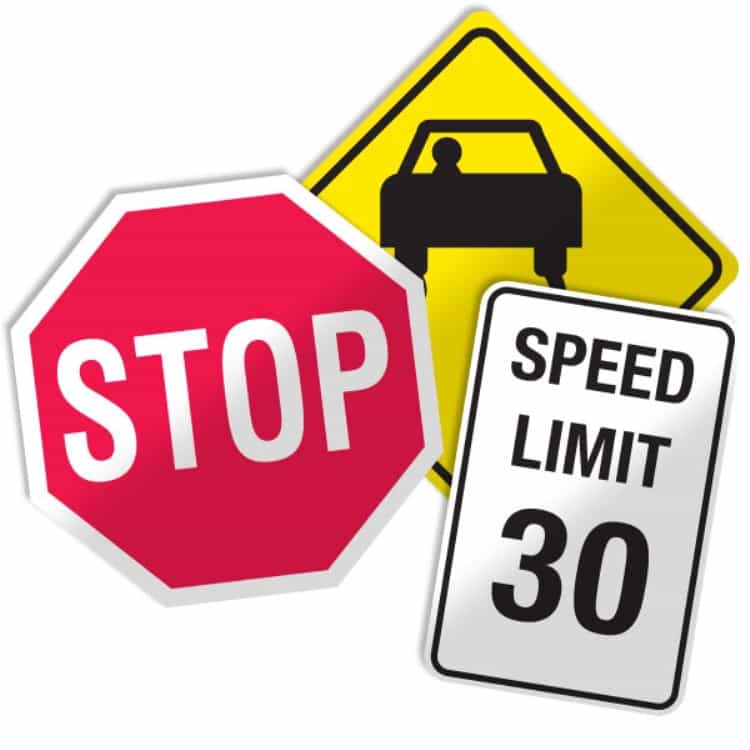 2. Yellow: Yellow is traditionally associated with caution signs. It is used to alert motorists of potential hazards and is often seen in no passing zones and pass with care signs. Yellow was also the original color for stop and yield signs before they were changed to red.
2. Yellow: Yellow is traditionally associated with caution signs. It is used to alert motorists of potential hazards and is often seen in no passing zones and pass with care signs. Yellow was also the original color for stop and yield signs before they were changed to red.
3. Orange: Orange signs are typically used in construction areas to inform motorists of temporary hazards due to road work or changes in traffic patterns.
4. Green, Blue, and Brown: These colors are designated for signs that provide less crucial information, such as directional guidance or points of interest.
5. Black and White: Black and white signs are primarily used for advisory purposes, such as indicating speed limits, parking regulations, and other traffic laws. These signs state the law and give instructions that must be obeyed.
6. White with Red: Some regulatory signs combine white with red, such as do not enter signs, which feature a white background with a red circle and a horizontal bar. Yield signs also use a combination of red and white, with red letters to convey the need to yield.
Each color serves a specific purpose in the hierarchy of road sign communication, with red demanding the most immediate attention for compliance with traffic laws, yellow and orange warning of various levels of hazards, and green, blue, and brown providing informational guidance. Black and white signs, being the most common for regulatory purposes, clearly state the rules that must be followed to maintain order and safety on the roads.
Common Examples of Regulatory Street Signs
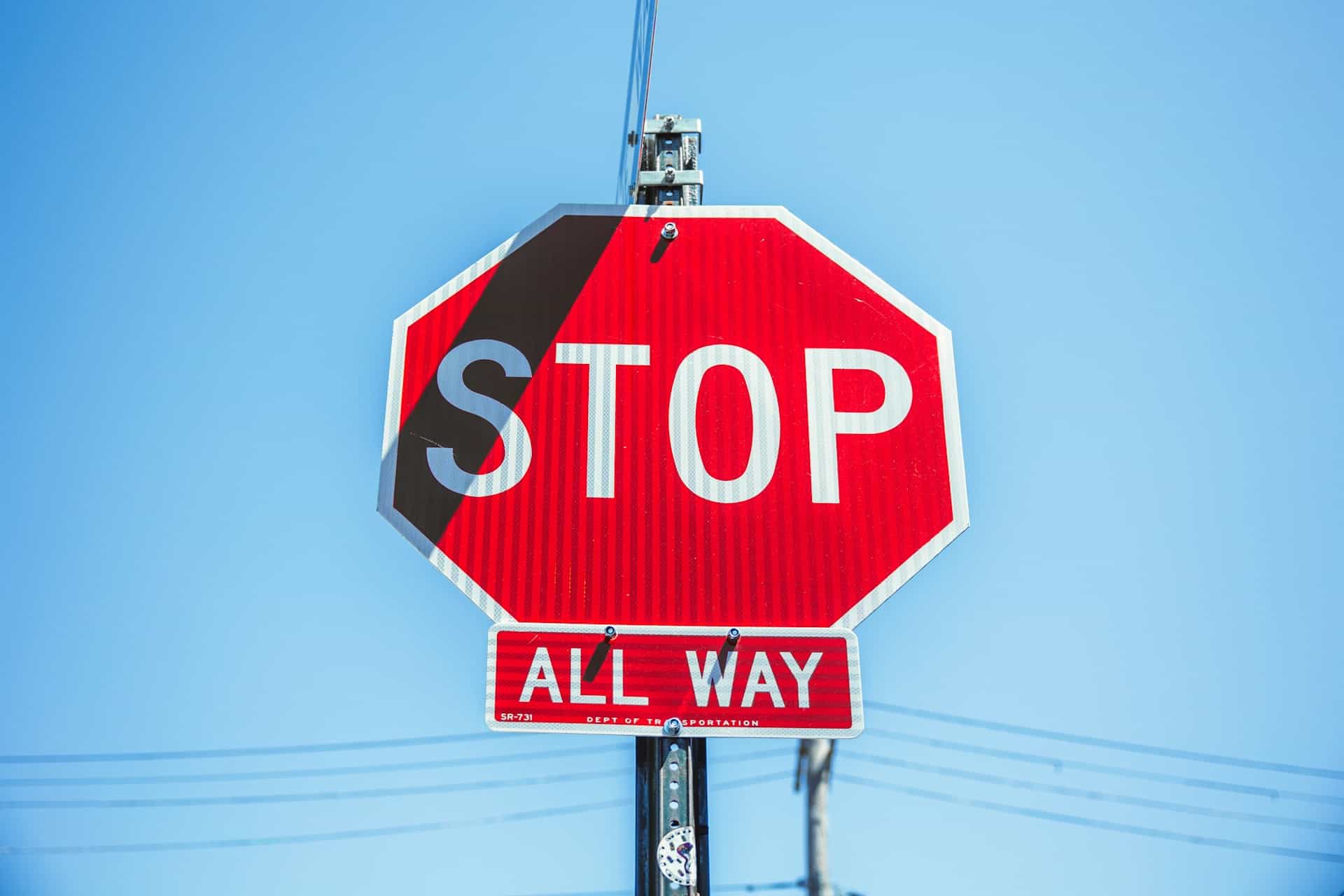 1. Stop Signs (R1-1): These are red octagonal signs with the word “STOP” in white letters, requiring drivers to come to a complete stop and proceed only when safe.
1. Stop Signs (R1-1): These are red octagonal signs with the word “STOP” in white letters, requiring drivers to come to a complete stop and proceed only when safe.
2. Speed Limit Signs (R2-1): These signs display the maximum legal speed for a stretch of road and are typically rectangular with black numbers on a white background. They are placed at points where speed limits change and at regular intervals to remind drivers of the applicable speed limit.
3. Yield Signs (R1-2): Inverted triangular signs with a red border and white background, instructing drivers to slow down and, if necessary, stop to give right-of-way to other road users before proceeding.
4. One Way Signs: These signs indicate that traffic is allowed to flow in only one direction on a street or road, helping to prevent wrong-way driving.
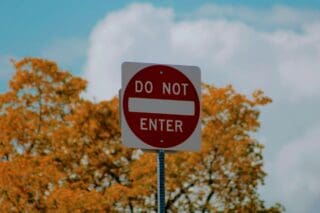 5. Do Not Enter Signs: These signs are used to indicate areas where entry is prohibited, often seen at the exit ramps of highways or one-way streets where entering would cause a vehicle to go against traffic.
5. Do Not Enter Signs: These signs are used to indicate areas where entry is prohibited, often seen at the exit ramps of highways or one-way streets where entering would cause a vehicle to go against traffic.
6. No Parking Signs: These signs indicate areas where parking is not allowed, often to ensure clear visibility or access for emergency vehicles.
7. Handicap Parking Signs: These signs designate parking spaces reserved for individuals with disabilities, ensuring accessible parking is available.
8. Fire Lane Signs: These signs mark areas that must be kept clear for fire department access in case of an emergency.
9. No Passing Zone Signs: These signs indicate stretches of road where overtaking and passing other vehicles is prohibited due to safety concerns, such as limited visibility or oncoming traffic.
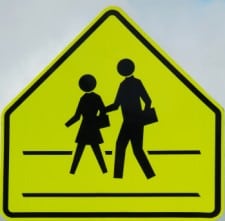 10. School Crossing Signs: These signs alert drivers to areas where school children may be crossing the street and where drivers should exercise extra caution.
10. School Crossing Signs: These signs alert drivers to areas where school children may be crossing the street and where drivers should exercise extra caution.
11. Pedestrian Crossing Signs: Similar to school crossing signs, these signs indicate designated areas where pedestrians have the right-of-way to cross the street.
12. Reduced Speed Limit Ahead (RUS) Signs: These signs warn drivers of an upcoming reduction in the speed limit, allowing them to adjust their speed in advance to comply with the new limit.
13. No U Turn Signs: These signs inform drivers that U-turns are not permitted at an intersection or in a particular area, often for safety reasons or due to traffic flow considerations.
14. No Left Turn Signs: These signs indicate that left turns are prohibited at a specific intersection or area, which could be due to traffic patterns or safety concerns.
15. Merge Signs: These signs inform drivers that two separate roadways are converging into one, requiring drivers to adjust their speed and merge safely.
16. Two Way Traffic Signs: These signs indicate that traffic is allowed to flow in both directions on a street or road, which is important for drivers to know, especially when entering or exiting roadways.
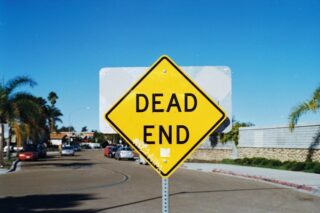 17. Dead End Signs: These signs indicate that the road does not continue and that drivers should not proceed beyond that point, helping to prevent vehicles from entering areas with no outlet.
17. Dead End Signs: These signs indicate that the road does not continue and that drivers should not proceed beyond that point, helping to prevent vehicles from entering areas with no outlet.
18. Slow Moving Vehicle Signs: These signs are placed on vehicles that travel at slower speeds, warning other drivers to be cautious when overtaking.
19. Deer Crossing Signs: These signs warn drivers that deer are known to cross the road in that area, prompting them to be vigilant and drive cautiously.
20. Winding Road Signs: These signs indicate that the road ahead has a series of winding curves or turns, advising drivers to reduce speed and drive carefully.
What Materials are Regulatory Street Signs Made of?
They are engineered for durability and visibility, made from tough materials designed to withstand the elements for a long time. The core structure, or blank, of these signs is typically made from aluminum. Aluminum is favored for its combination of strength and lightness, as well as its resistance to rust and corrosion. The sign’s face features retroreflective sheeting, which is a specialized material embedded with tiny glass beads that capture and bounce back light from vehicle headlights, ensuring the sign is visible at night. This sheeting can be imbued with different pigments to reflect colored light corresponding to the sign’s message.
The manufacturing process of these signs is meticulous but quick, involving die-cutting the blanks to shape, ensuring they are free of imperfections, and thoroughly degreasing them before applying the retroreflective sheeting. The sheeting is carefully cut and applied to the sign blank, with any air bubbles removed to ensure a smooth finish. The sign is then subjected to heat to activate heat-sensitive adhesives, ensuring a secure bond between the sheeting and the blank. This combination of materials and manufacturing processes results in street signs that are both highly reflective and capable of enduring various environmental conditions, making them a reliable tool for regulating traffic and conveying important information to road users.
Are Regulatory Street Signs Required to be Reflective?
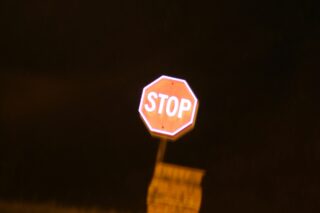 Yes, they are required to be reflective to ensure visibility and legibility, especially during low-light conditions or at night. Reflectivity is a crucial safety feature that allows drivers to easily spot and comprehend the information conveyed by the signs, aiding in timely decision-making on the road. The retroreflective properties of these signs enable them to reflect light back to its source, such as vehicle headlights, making them stand out against the surrounding environment.
Yes, they are required to be reflective to ensure visibility and legibility, especially during low-light conditions or at night. Reflectivity is a crucial safety feature that allows drivers to easily spot and comprehend the information conveyed by the signs, aiding in timely decision-making on the road. The retroreflective properties of these signs enable them to reflect light back to its source, such as vehicle headlights, making them stand out against the surrounding environment.
This reflective capability is mandated by traffic control standards to enhance road safety and reduce the risk of accidents by providing clear guidance to motorists regardless of the time of day or weather conditions. Therefore, regulatory street signs must meet specific reflectivity standards to fulfill their essential role in regulating traffic and ensuring the smooth flow of vehicles on roadways.
Conclusion
Regulatory street signs play a pivotal role in shaping the behavior of road users and ensuring the safety and efficiency of our transportation networks. With standards set by organizations such as the Federal Highway Administration (FHWA) and detailed in the Manual on Uniform Traffic Control Devices (MUTCD), these signs are meticulously designed, constructed, and installed to convey crucial information about traffic laws and regulations. Made from durable materials such as aluminum and retroreflective sheeting, they are engineered to withstand the elements and remain highly visible, day or night. By adhering to the standards and principles outlined in the MUTCD, they serve as a cornerstone of effective traffic control, contributing to the smooth flow of traffic and the protection of all road users.
Popular Posts:

